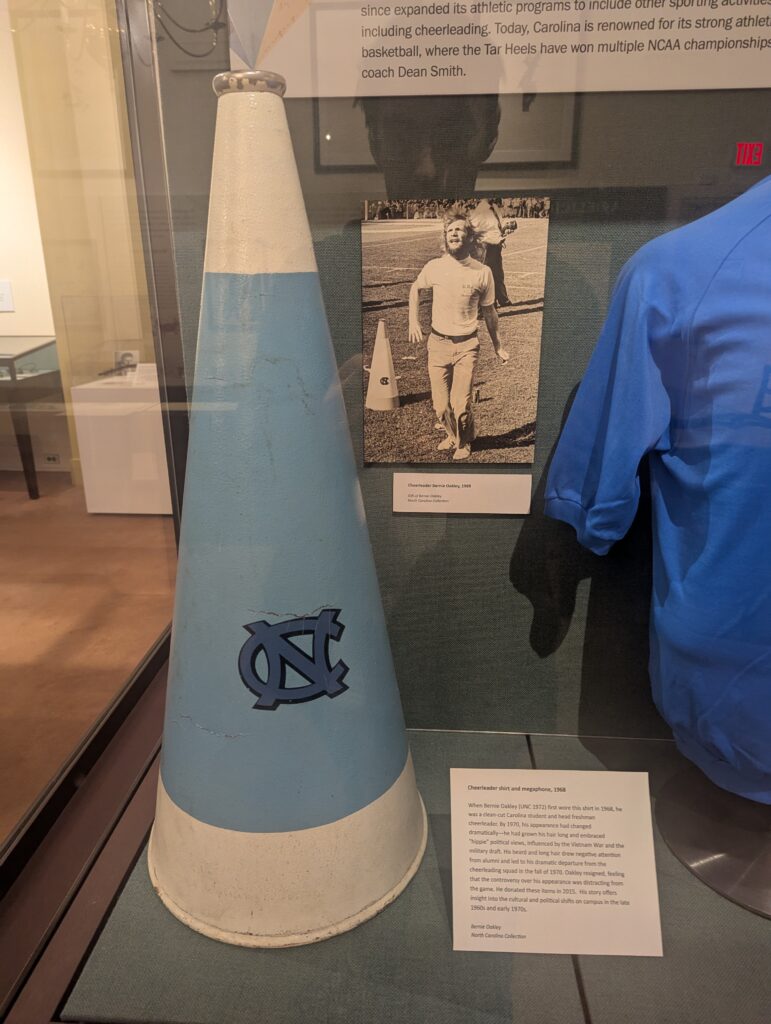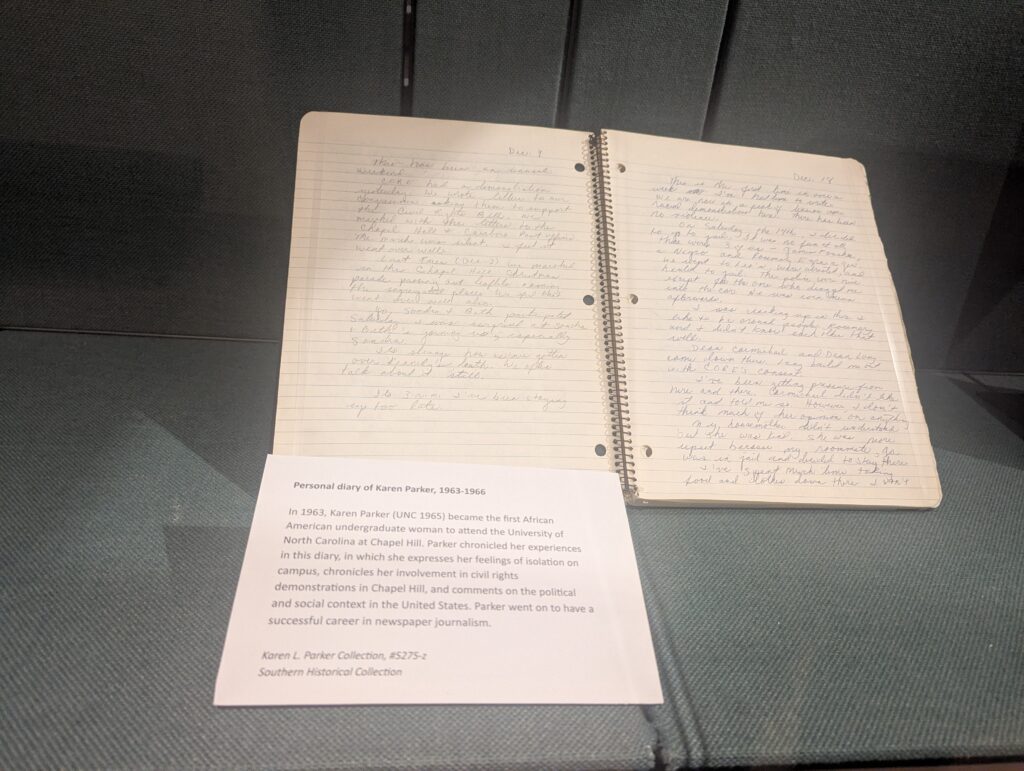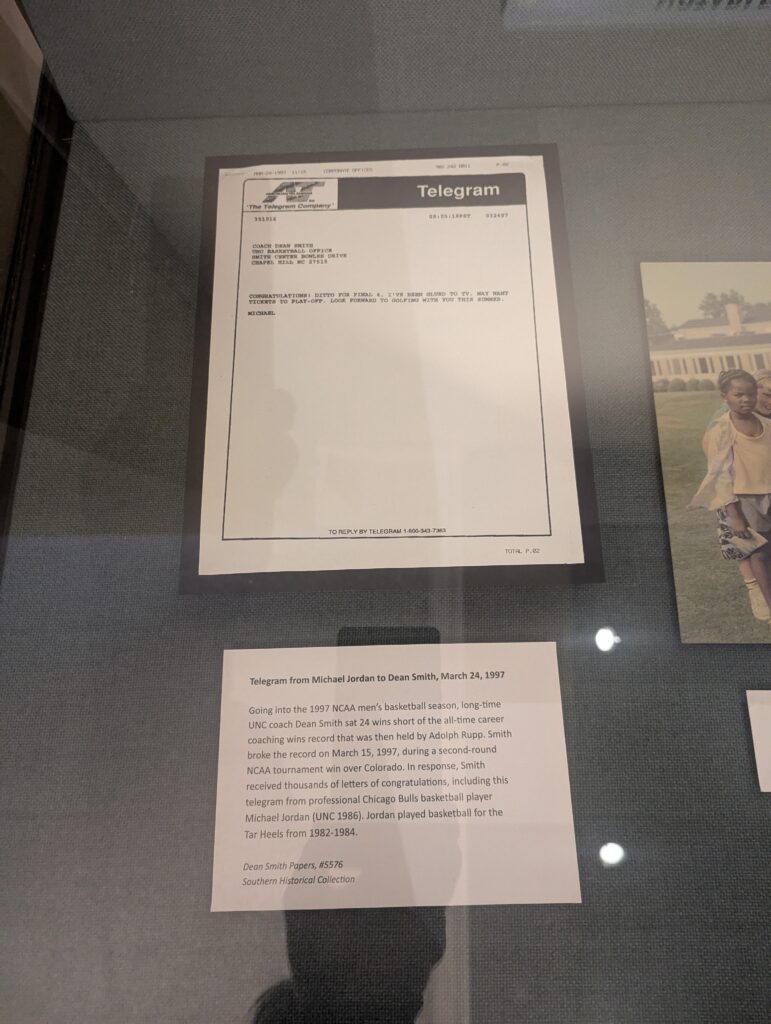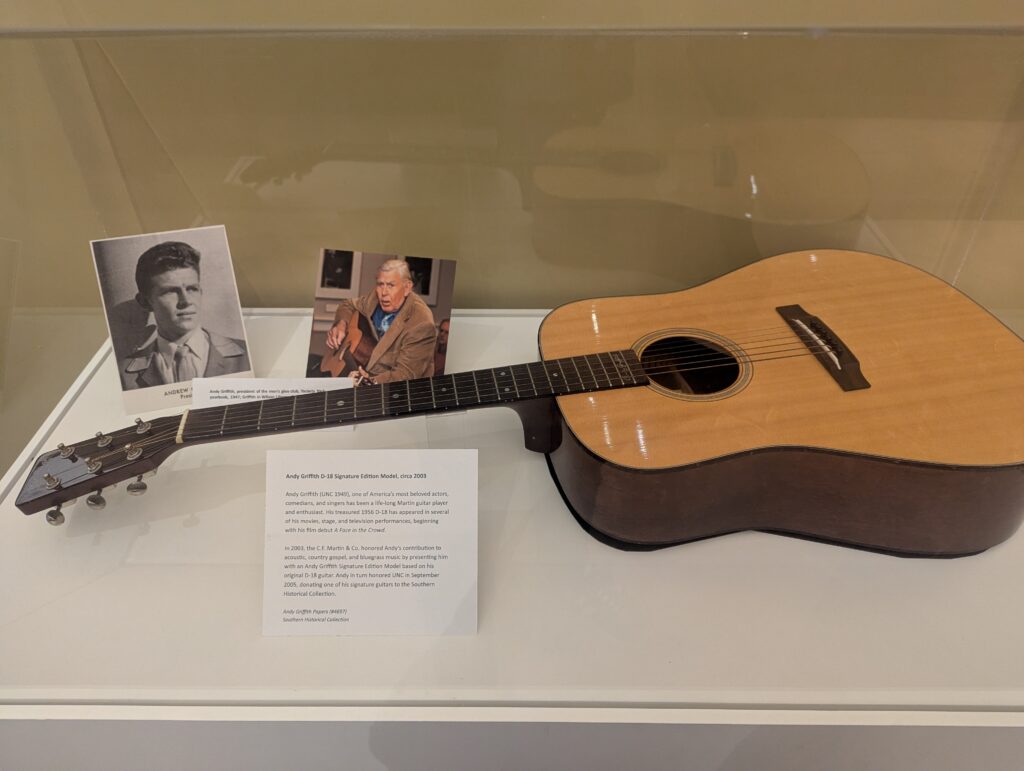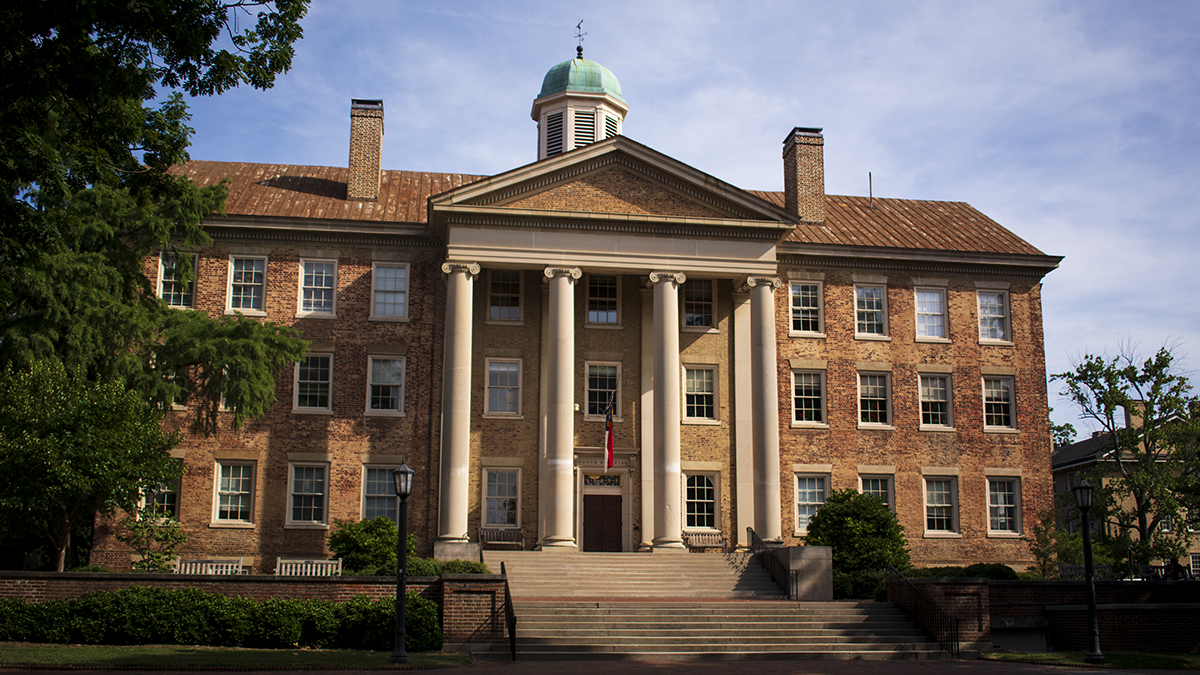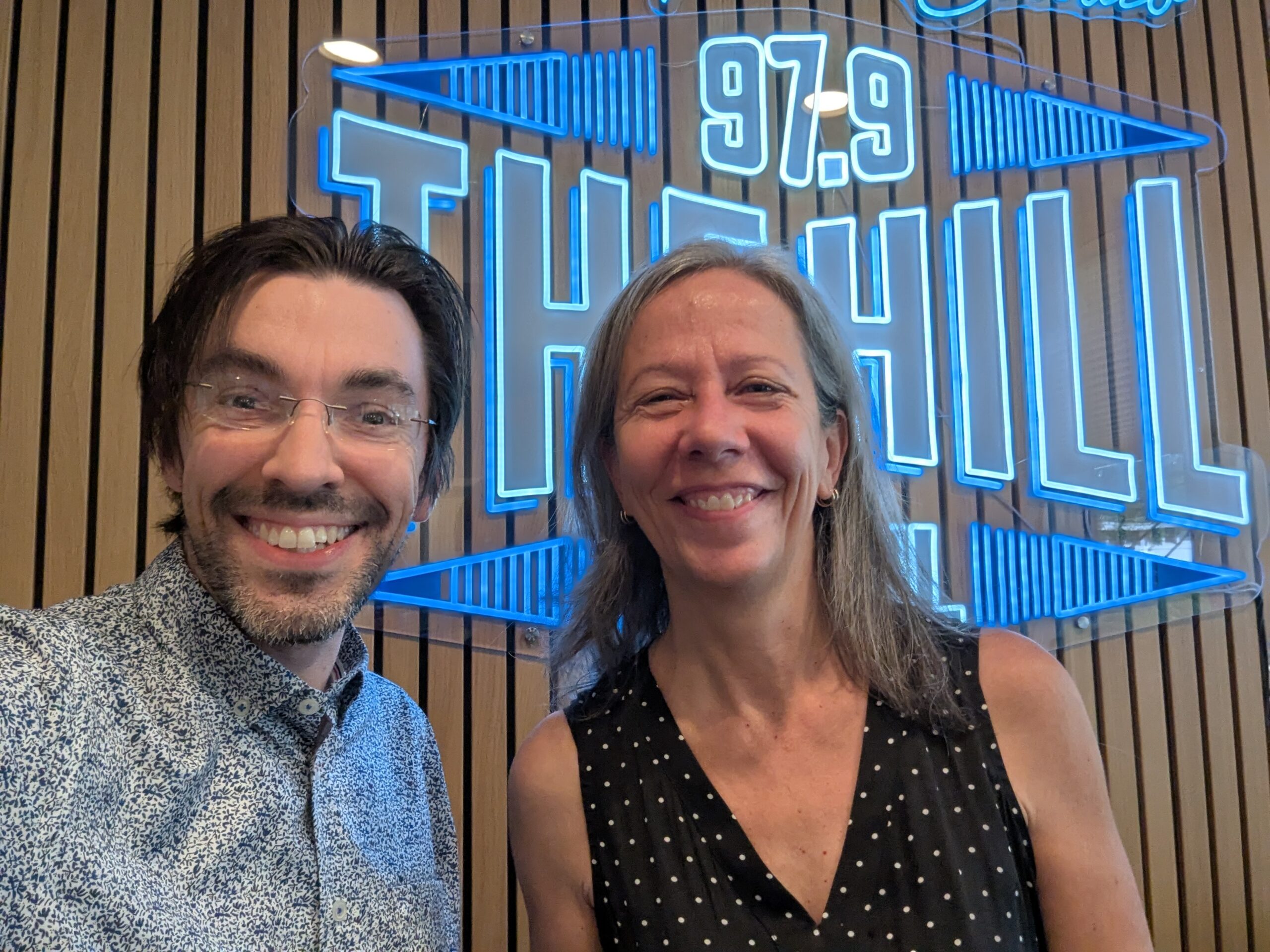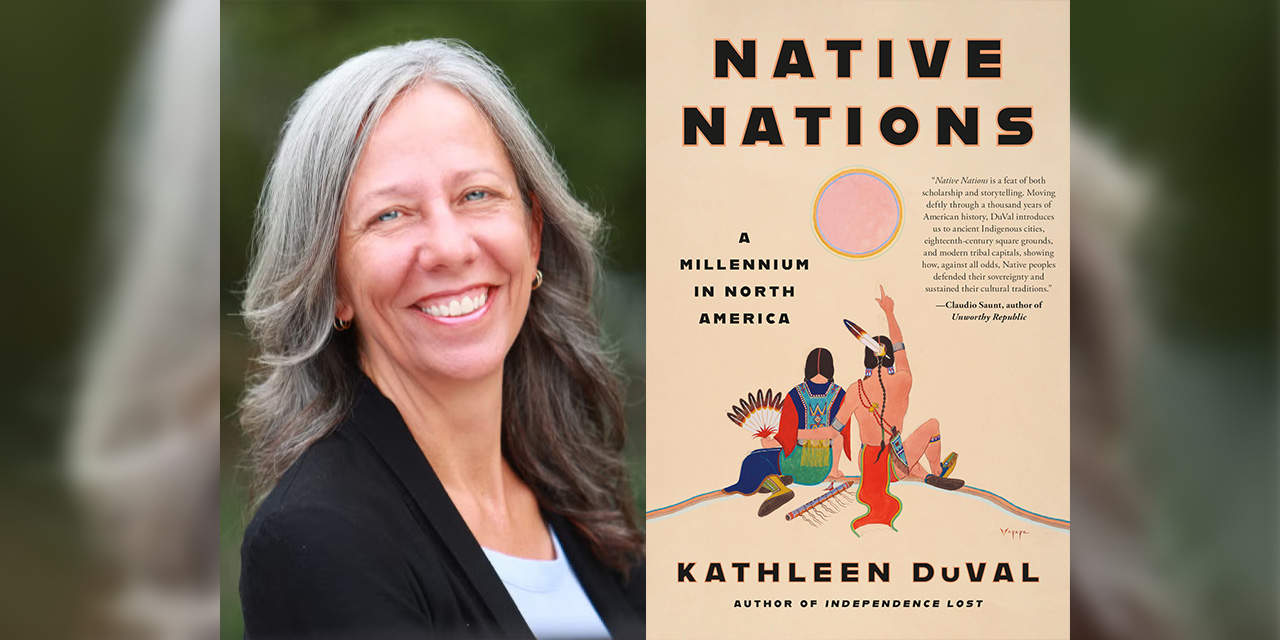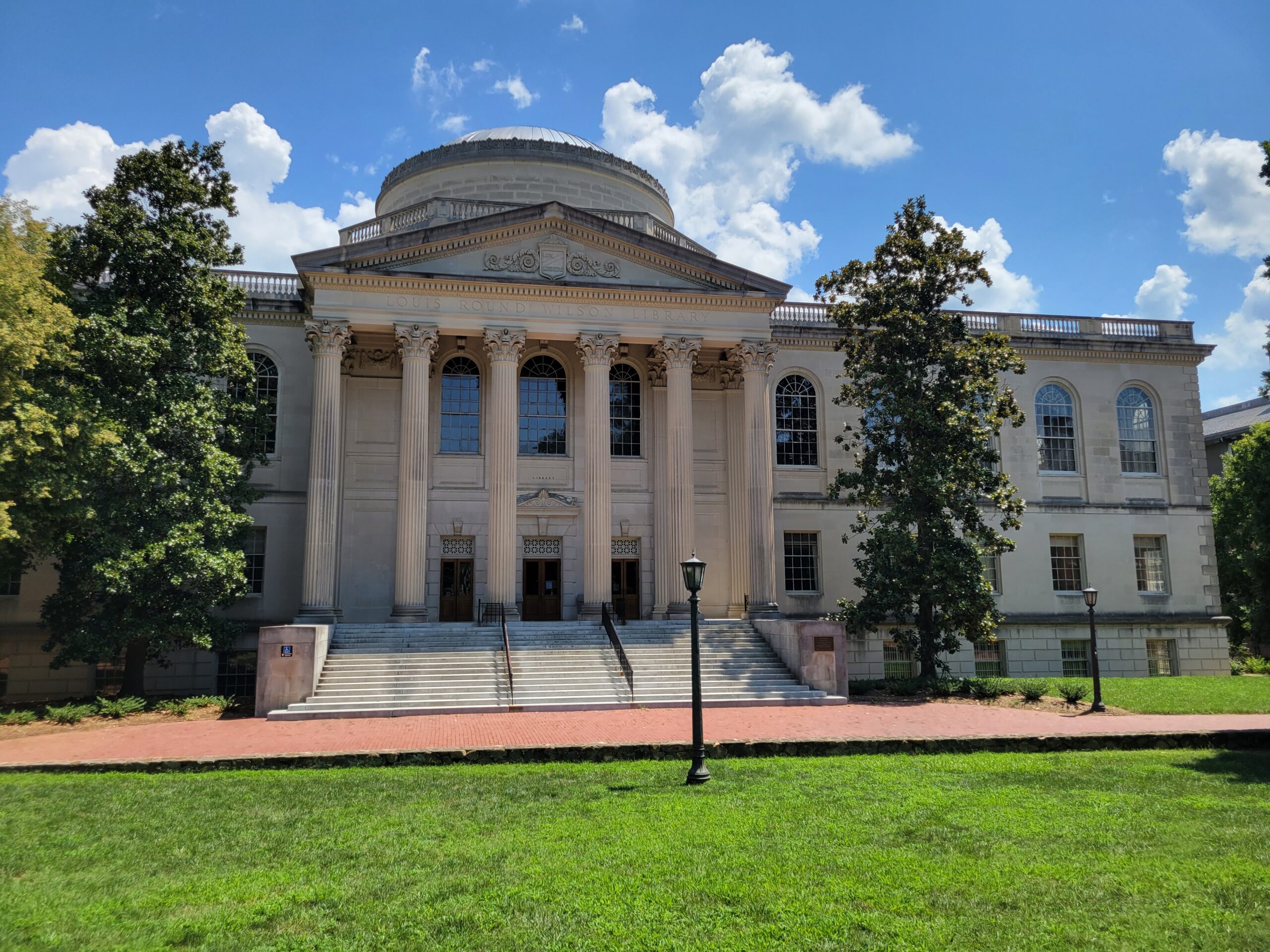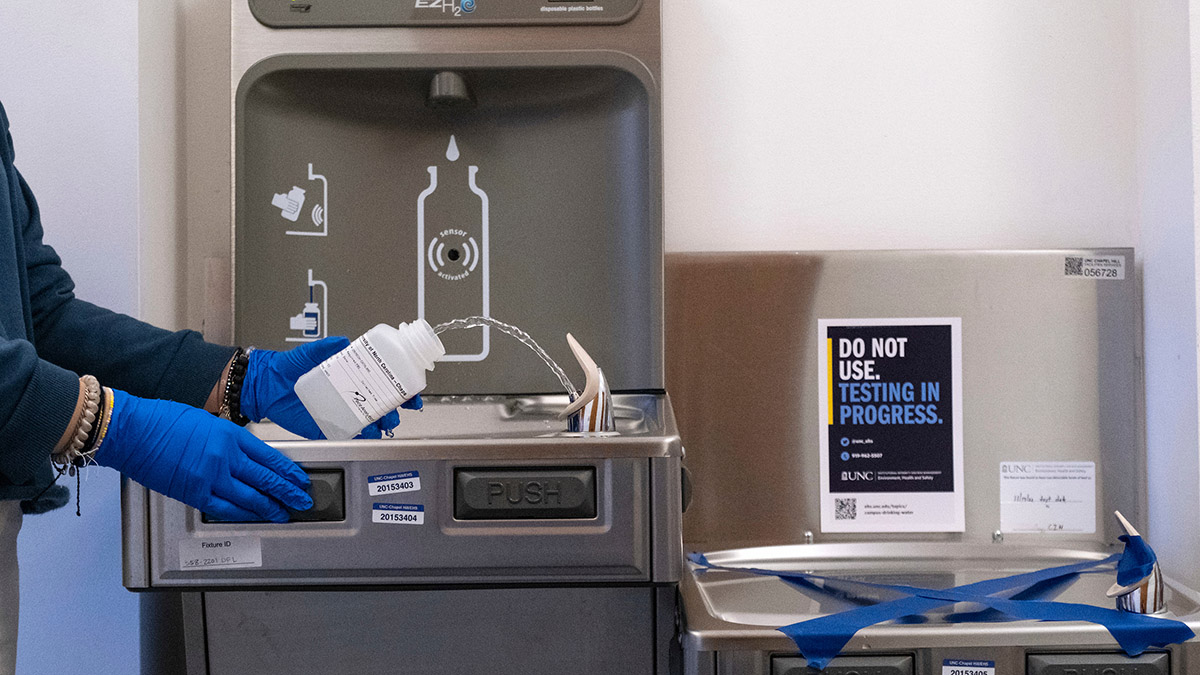On campus, you’ve got a rare chance this spring to see some of the most famous artifacts in UNC’s storied history. They’re on display at Wilson Library, part of a must-see exhibit called “Priceless Gems” that runs the gamut of UNC’s existence from the 1790s to today. 97.9 The Hill’s Aaron Keck recently got the chance to see it for himself.
Listen to the story.
I’m standing inside the North Carolina Collection Gallery at Wilson Library, getting up close and personal with some of the most famous items in UNC’s long (and sometimes graphic) history.
“My favorite item in the exhibit is actually the Elisha Mitchell pocket watch,” says assistant gallery keeper Christian Edwards – leading me to a display case where I can see it for myself, the very watch that Elisha Mitchell had in his pocket when he died trying to measure the height of the mountain that bears his name.
Edwards loves the watch, but everybody’s got their own favorites. There’s a lot to choose from.
Assistant University Archivist Lolita Rowe takes me forward to the twentieth century, and shows me the diploma that Henry Owl received as UNC’s first Native American graduate.
“He used this to argue against people who were denying him, as an Eastern Band Cherokee, the right to vote,” she says. (Eventually it worked, though it took many years of advocacy.)
We fast forward to the 1960s, where gallery keeper Linda Jacobson shows me the megaphone owned by cheerleader Bernie Oakley – who sparked months of controversy in 1970 when he decided to grow long hair. (It was a simpler time. Or a much more complicated one, not sure which.)
Around the corner, student worker Claire Scott Stevens shows off the personal diary of Karen Parker, UNCs first black female undergrad, who wrote about her decision to get involved in civil rights activism. (The diary is open to the page where she makes the decision to get arrested.)
“I think it’s my favorite item because it shows the importance of confronting this history that makes us uncomfortable,” Stevens says. “It’s really easy to ignore it or look past it, especially when we didn’t experience it. I think it’s really important to confront that history, look at it face to face, and see what it was like to experience that.”
Ironically, many of the items UNC is proudly showing off today are artifacts from people and movements that the university rejected or denounced at the time: racial justice agitators, hippie cheerleaders, and the like. But of course many other items are things that UNC celebrated even at the time – including big achievements in sports.
“We have the telegram that Michael Jordan sent to Dean Smith,” Edwards says. Sure enough, there it is, a brief all-caps message congratulating the legendary coach on breaking the all-time career wins record in 1997. (“He sent a telegram in 1997?!” I ask. They’re just as confounded as me.)
And in addition to the physical objects, the collection also contains audio recordings as well – including one of UNC alum Ed Weiss, better known as the legendary Beach Radio DJ Charlie Brown, interviewing Bo Diddley back in 1959.
You can see and hear all those artifacts – plus a letter written by a UNC student in 1795, a telescope from the early 1800s, a guitar once owned by Andy Griffith, basketball plays hand-drawn by Dean Smith, and more – all on display at the Wilson Library through June.
And the Wilson staff will be happy to show you around.
“You hear these great stories, and then (you’ll) be able to see the artifact that actually represents that story and history,” says Edwards, standing once again in front of Mitchell’s pocket watch. “After I started here, I saw this on display and I was like, ‘I’m meant to be here. It is fun telling North Carolina history.'”
Featured photo: Linda Jacobson tells the story of a telescope brought to UNC in the early nineteenth century. All photos by Aaron Keck/Chapel Hill Media Group.
Chapelboro.com does not charge subscription fees, and you can directly support our efforts in local journalism here. Want more of what you see on Chapelboro? Let us bring free local news and community information to you by signing up for our newsletter.



